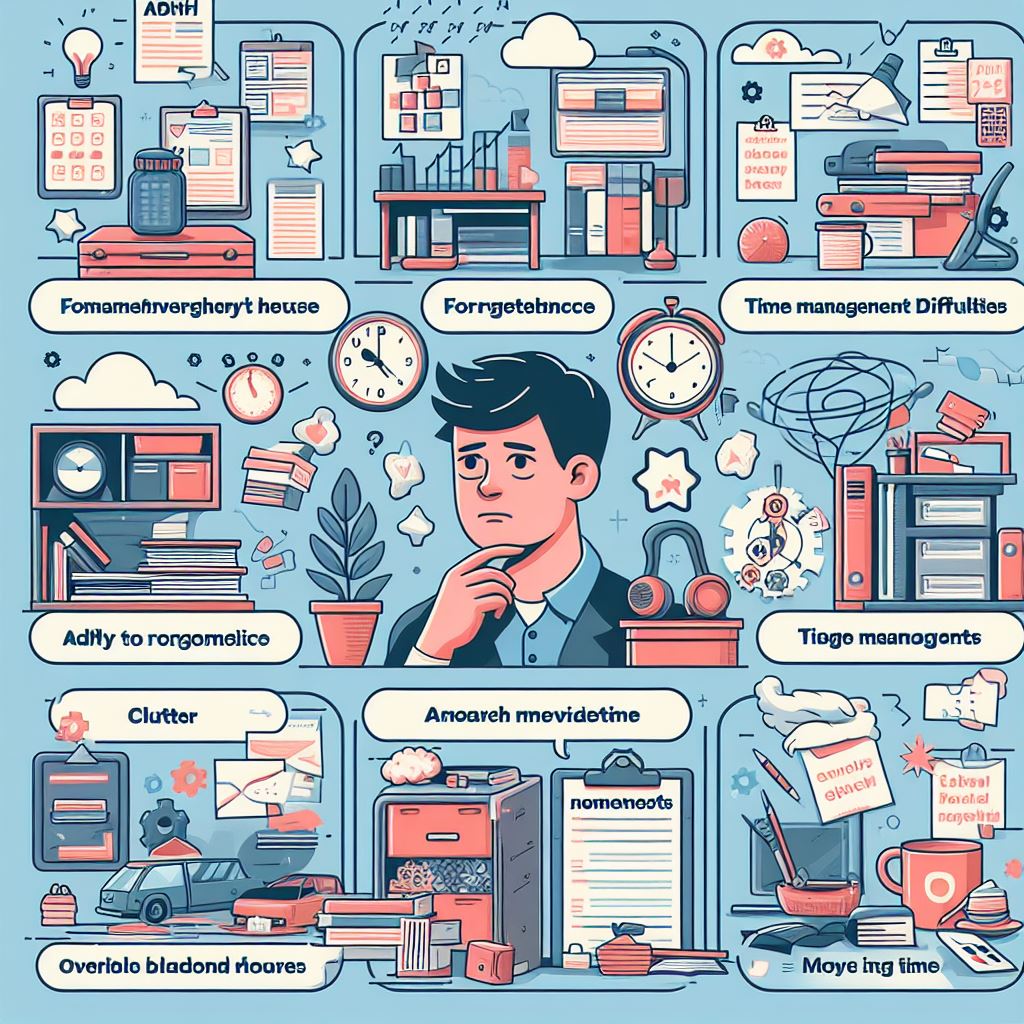
Attention Deficit Hyperactivity Disorder (ADHD) can make organizing your home a challenge. However, research shows that a structured and orderly environment can significantly improve the quality of life for adults with ADHD (Ramsay & Rostain, 2015). In this article, we offer practical, science-based tips to help you effectively organize your space.
Understand the Impact of ADHD on Organization
ADHD is characterized by difficulties with attention, impulsivity, and, in some cases, hyperactivity (American Psychiatric Association, 2013). These characteristics can hinder organization, leading to clutter accumulation and forgetting important tasks (Ramsay & Rostain, 2015). Consequently, understanding how ADHD affects your ability to organize is the first step in developing effective strategies.
Set Goals and Priorities
Before you start organizing, it's crucial to identify your objectives and priorities. What areas of your home need the most attention? What results do you want to achieve? A study by Hartl et al. (2008) found that setting clear and realistic goals is essential for the success of organizational efforts in people with ADHD. Therefore, take the time to define your goals before you begin.
Create a Personalized Organization System
There is no one-size-fits-all approach to organization. What works for one person may not work for another. That's why it's essential to create a system that suits your individual needs and preferences. Consider using labels, containers, and designated spaces for each category of items (Kolberg & Nadeau, 2002). This way, you'll be able to find what you need quickly and easily.
Reduce Visual Stimuli
Excessive visual stimuli can be overwhelming for people with ADHD. For this reason, it's important to minimize visual clutter by removing unnecessary items and creating a visually calm environment (Hallowell & Ratey, 2005). This can help reduce distractions and improve concentration. Moreover, a visually organized space can contribute to a sense of calm and control.
Break Tasks into Manageable Steps
Organizing can seem like a monumental task, especially when clutter has accumulated over time. To avoid feeling overwhelmed, break the process into small, manageable steps. Start with one room or even one drawer at a time. Celebrate each accomplishment, no matter how small (Solanto, 2011). This way, you'll maintain motivation and avoid procrastination.
Use Technology as Your Ally
In the digital age, technology can be a valuable tool for organization. Leverage task list apps, reminders, and calendars to stay on top of your responsibilities. Additionally, consider investing in time-saving devices, such as robot vacuums or smart storage systems (Barkley, 2012). By doing so, you'll simplify your organizational efforts and gain more time for other activities.
Involve Your Support Network
Organizing a home can be challenging, especially when you have ADHD. That's why you shouldn't hesitate to ask for help from family and friends when you feel overwhelmed. Delegate tasks and turn organization into a social activity. Research shows that social support is crucial for the successful management of ADHD in adults (Newark & Stieglitz, 2010). By involving your support network, you'll not only lighten the load but also strengthen your relationships.
Maintain a Calendar
Adults with ADHD often struggle with time management and prospective memory, which is the ability to remember to do things in the future (Ramsay & Rostain, 2015). To combat these challenges, keeping an updated calendar can help you stay organized and on top of your commitments. Consider placing the calendar in a prominent location and checking it frequently. This way, you'll reduce the risk of forgetting important appointments and pending tasks.
Develop Consistent Routines
Routines are essential for maintaining long-term organization. To establish effective routines, create a schedule for daily and weekly tasks, such as cleaning and tidying (Kolberg & Nadeau, 2002). Then, turn these routines into habits by linking them to existing activities, such as cleaning the kitchen after each meal. Over time, these routines will become a natural part of your daily life.
Be Kind to Yourself
Finally, it's crucial to remember to be kind to yourself during the organization process. Organization is a journey, not a destination. Celebrate your successes, learn from your challenges, and avoid comparing yourself to others. With patience, practice, and the right strategies, you can create a home that fosters your well-being and productivity. Give yourself permission to go at your own pace and remember that every step you take is significant progress.
Conclusion
In summary, organizing your home when you have ADHD requires a strategic and individualized approach. By understanding the impact of ADHD, setting clear goals, creating personalized systems, reducing visual stimuli, breaking tasks into manageable steps, using technology, involving your support network, maintaining a calendar, developing routines, and being kind to yourself, you can overcome challenges and enjoy the benefits of an organized space. Remember, every step you take toward organization is a step toward a more manageable and fulfilling life.
Si tienes sospechas de padecer TDAH en adultos empieza tu ONLINE ASSESSMENT doing CLICK HERE

